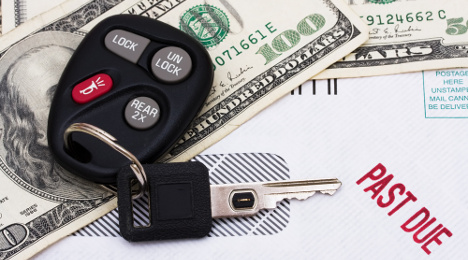Largest sequential auto default drop in 5 years

Photo from Shutterstock.com
As analysts discussed how commercial banks are viewing auto financing, they also spotted the largest sequential drop in the auto segment of the S&P/Experian Consumer Credit Default Indices in five years.
S&P Dow Jones Indices and Experian released its latest default data on Tuesday and the information through April showed auto loan defaults decreased 10 basis points from the previous month to 0.90 percent.
The last time the default rate dropped by at least 10 basis points came in 2012, when the March reading came in at 1.11 percent after landing at 1.22 percent in February of that year.
The month-over-month drop also resulted in the auto default rate settling below 1 percent for the first time since last July, which was the last one in a four-month stretch a year ago when the level sat below that threshold.
Meanwhile, the April composite rate — a comprehensive measure of changes in consumer credit defaults — decreased 4 basis points from previous month to 0.90 percent.
The first mortgage default rate also made a move lower, dropping 6 basis points from March to 0.69 percent.
Conversely, the bank card default rate increased 4 basis points from March to 3.35 percent, extending a streak of six consecutive sequential rises to reach a 46-month high. This segment’s rate hasn’t been this high since May 2013, when bank card default stood at 3.63 percent.
When comparing the bank card default rate among the four census divisions, analysts found the default rate in the South is considerably higher than the other three census divisions. The East South Central Census Region — comprised of Kentucky, Tennessee, Alabama and Mississippi — has the highest bank card default rate.
As per Bureau of Labor Statistics, S&P and Experian added that these states have some of the lowest median household income.
Looking elsewhere, analysts found that four of the five major cities saw their default rates decrease in the month of April.
Chicago experienced the largest decrease, down 11 basis points from March to 0.94 percent.
Dallas and Miami each reported decreases of 10 basis points from the previous month to 0.69 percent and 1.30 percent, respectively.
Los Angeles was down 6 basis points from March to 0.69 percent.
At 1.10 percent, New York was the only city reporting a default rate increase of 1 basis point from previous month.
David Blitzer, managing director and chairman of the index committee at S&P Dow Jones Indices, offered his recap of the latest Federal Reserve survey that offered insight into how banks are approaching auto finance.
“Default rates on bank cards continue to creep higher while default rates on auto loans are little changed,” Blitzer said.
“The Federal Reserve's quarterly survey of senior bank loan officers revealed that a modest fraction of banks tightened standards on credit card loans and a similar portion of banks were tightening standards for auto loans,” he continued. “Banks also raised the spread over their cost of funds and increased the minimum credit scores required for auto loans. The same Fed survey showed weakening demand for auto loans.
“Separately, auto sales declined during the first quarter before seeing a slight rise in April. Demand for bank card loans was mixed according to the Fed survey,” Blitzer went on to say.
Blitzer also touched the mortgage portion of the Fed survey.
“Default rates on first mortgages are steady as home prices continue to rise in most parts of the country and sales of both new and existing homes increase,” he said. “The Fed survey reported little change in either demand for mortgage loans or mortgage lending standards.
“The level of outstanding mortgage debt bottomed in the second quarter of 2014 and has been increasing steadily since then,” Blitzer continued. “After almost three years, outstanding mortgage debt is 9 percent below the peak seen in the first quarter of 2008.
“Some analysts question if continuing increases in home prices presage a new housing bubble. Given conditions in the mortgage markets, this is not a current concern,” he added.
Jointly developed by S&P Indices and Experian, analysts noted the S&P/Experian Consumer Credit Default Indices are published monthly with the intent to accurately track the default experience of consumer balances in four key loan categories: auto, bankcard, first mortgage lien and second mortgage lien.
The indices are calculated based on data extracted from Experian’s consumer credit database. This database is populated with individual consumer loan and payment data submitted by lenders to Experian every month.
Experian’s base of data contributors includes leading banks and mortgage companies and covers approximately $11 trillion in outstanding loans sourced from 11,500 lenders.

 View The Latest Edition
View The Latest Edition

